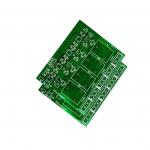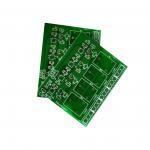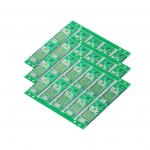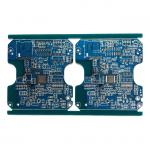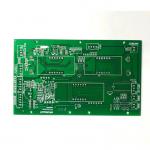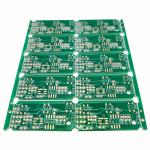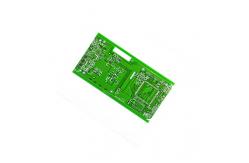Printed Circuit Board Fabrication Immersion Gold + OSP Metal Base
Plate
Printed Circuit Board Fabrication Description:
1. Assemblability
PCB products not only facilitate the standardized assembly of
various components but also enable automated and large-scale mass
production. In addition, the overall assembly of the PCB and
various other components can also form larger components, systems,
and even complete machines.
2. Maintainability
Since the components of PCB products and various components are
assembled in a standardized design and large-scale production,
these components are also standardized. Therefore, once the system
fails, it can be replaced quickly, conveniently, and flexibly, and
the work of the system can be quickly restored.
Printed Circuit Board Fabrication Parameters:
| SMT Capability | 14 million spots per day |
| SMT Lines | 12 SMT lines |
| Reject Rate | R&C: 0.3% |
| IC: 0% |
| PCB Board | POP boards/Normal Boards/FPC boards/Rigid-flex boards/Metal base
boards |
| Parts Dimension | Min BGA Footprint:03015 Chip/0.35mm BGA |
| Parts SMT Accuracy:±0.04mm |
| IC SMT Accuracy:±0.03mm |
| PCB Dimension | Size:50*50mm-686*508mm |
| Thickness: 0.3-6.5mm |
Printed Circuit Board Fabrication Introduction:
PCB (printed circuit board) is a printed circuit board, referred to
as a printed circuit board, and is one of the important components
of the electronics industry. Almost every electronic device,
ranging from electronic watches and calculators to computers,
communication electronic equipment, and military weapon systems, as
long as there are electronic components such as integrated
circuits, in order to make the electrical interconnection between
various components, use printed circuit boards. plate. The printed
circuit board consists of an insulating base plate, connecting
wires, and pads for assembling and soldering electronic components,
and has the dual functions of a conductive circuit and an
insulating base plate. It can replace complex wiring and realize
the electrical connection between components in the circuit, which
not only simplifies the assembly and welding of electronic
products, reduces the workload of wiring in the traditional way,
and greatly reduces the labor intensity of workers; it also reduces
the size of the whole machine. volume, reduce product cost, and
improve the quality and reliability of electronic equipment.
